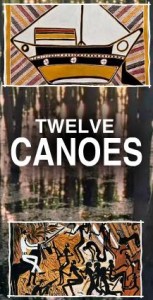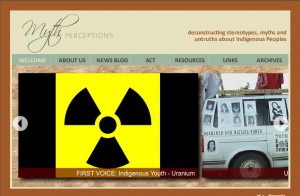I found this site that is to educate people about the Yolngu people of Ramingining in Australia’s Northern Territory. The website is a great use of technology and educating others. They have provided a study guide for teachers and students. It is quite interactive and divides up the culture so that you can explore the art, music, the people, etc. It shows what is important to the people in a very easy to follow way.
Tag: language
http://www.native-languages.org/
Native Languages of the Americas: Preserving and promoting American Indian languages
This is a huge database of information relating to the languages of the First Nations peoples. It is run by a non-profit organization based in Minnesota.
The Blackfoot section for example (http://www.native-languages.org/blackfoot.htm) contains links to the Blackfoot alphabet, vocabulary, pronunciation guides, and common words grouped by themes. Because it is an oral language, all of the words are written phonetically using the English language. This does not translate to the tongue. For example, the word for bear, is spelled as “kiááyo.” When heard spoken however, it sounds more like “ghuuy-yoo.”
These resources would be best used by someone who already has a grip on the language. My experience with the language is that there are many nuances of pronunciation that are very difficult. I know many people who can understand the language, but can not speak it. These resources will not be much use for anyone at this level. I have witnessed an elder correcting a person’s pronunciation of a word repeatedly. Without that kind of immediate feedback, a person will not be able to fully learn the language.
These shortcomings could be addressed to some degree with video and audio clips. At least the learner could hear the words as they are supposed to be spoken.
This Australia-based article discusses concerns around reducing the amount of time spent teaching in the local (Aboriginal) language down to a mandated one hour/day. Several reasons for doing so are listed, including the argument that Aboriginal employment is very low because education levels are very low because education is primarily conducted in English. It is argued that forcing students to learn in English will increase English literacy rates along with providing students with an education.
The author of this article disagrees with this strategy, noting that there are flaws in the logic, including the fact that low education levels are not the only reason for low employment. There are other reasons that can be cited, such as bureaucratic regulations requiring completion of literacy courses prior to gaining access to certain jobs.
Some of the areas of concern cited for moving to a one hour a day education in English are:
- Poor attendance will likely become lower
- Parental support may drop
- Turnover of teachers may increase
- Indigenous languages are further at risk
The article goes on to discuss the importance of preserving Aboriginal languages.
For those interested, several responses to the article follow it.
http://www.crikey.com.au/2008/11/20/classroom-english-will-be-the-death-of-aboriginal-languages/
MythPerceptions
Myth Perceptions is a site that I came across that might help people understand First Nations culture better. Many people (not necessarily those taking this course) but cultural misconceptions and stereotypes exist (regardless of the culture). This site provides information to demystify those ideas. It also presents issues that First Nations people face.
Tradition and Literature
I came across the “Using First Nations Traditional Literature in the Classroom” site. It is created by the Saskatoon Public Schools Online Resources Centre. It provides educational resources to teachers. There are outlined activities for oral tradition, examining folklore, and story-telling. These are all important aspects to First Nations culture. This site helps to keep those alive for students and teaches them about those traditions. This can be useful to help educators incorporate tradition and culture into the classroom.
Technology helping to preserve language
Bowers (2001) makes the assertion that technology is fundamentally biased toward a European way of thinking. Even if this is the case, computers are not going to go away any time soon. An elder of the Kainai people named Pete Standing Alone stated on September 14, 2010 that technology should be used to help preserve the ways of the people. At Red Crow Community College, the Kainai studies department has set up a database of Blackfoot words. The pronunciation of the words can be heard by clicking on them. While it is not a substitute for face-to-face interaction, it is a tool that has the potential to preserve the Blackfoot language.
Blackfoot Phraseology: http://kainaistudies.com/modules/phraseology/
Bowers, C., Vasquez, M., & Roaf, M. (2000) Native people and the challenge of computers: Reservation schools, individualism, and consumerism.” American Indian. 24(2), 182-199.

